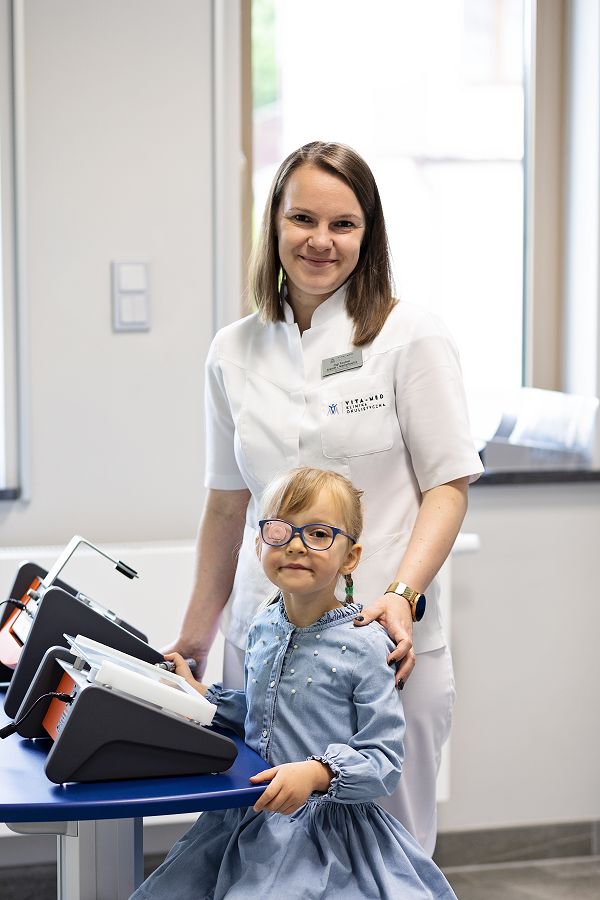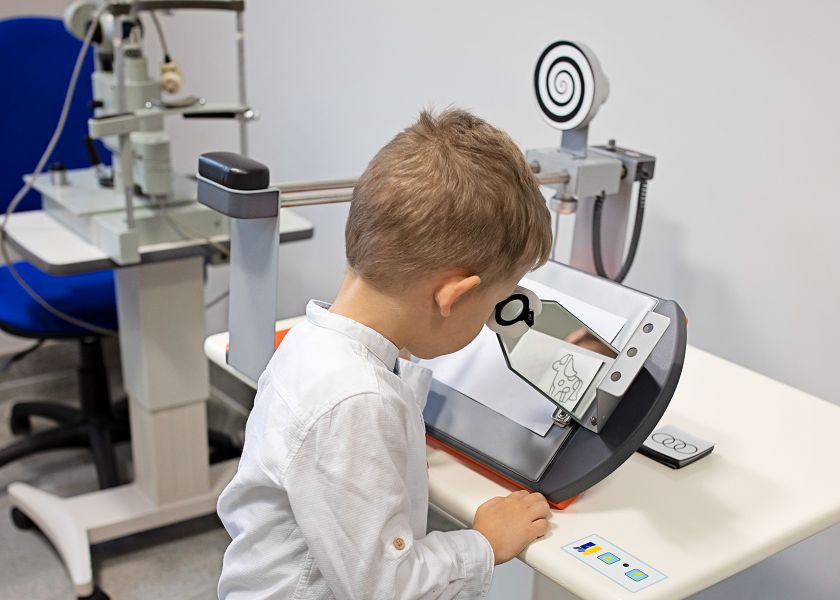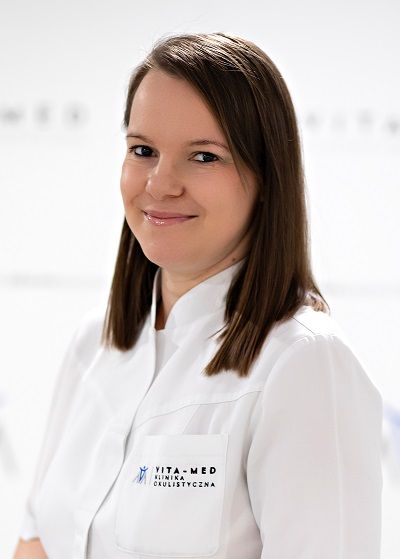Visual therapy
We help restore the proper functioning of the visual system. During vision training, we use proprietary eye exercises that allow you to restore the efficiency of improperly developed and lost functions. We offer visual therapy for both children and adults.
Expert recommendation
Visual therapy is most often performed in children, because their visual system is the most plastic, and pathological conditions are not fixed. Adequate treatment can also be introduced in adults. Rehabilitation of the eye organ is a concept with a broad meaning and covers both the prophylaxis of vision and the therapy of vision, which is required and improves the visual function of people with various ophthalmic diseases disturbing binocular vision.
The most common ophthalmological diseases in children, in which vision rehabilitation is necessary to improve vision, are: strabismus, amblyopia, convergence and accommodation disorders, school difficulties such as writing and / or reading disorders, visual and auditory memory disorders, and concentration disorders, suspicion of dyslexia. and nystagmus.
Paulina Arendt-Nienartowicz, MSc
Optometrist
Diagnostics of binocular vision disorders:
- measurement of the angles of strabismus and binocular vision on the synoptophore,
- binocular vision test (Mucha and TNO stereotest),
- examination of the mobility of the eyeballs on the Hess screen.
Diagnosis of accommodation disorders.
Vision therapy:
- pleoptic exercises (in amblyopia),
- orthoptic exercises (in overt and hidden strabismus, before and after surgical treatment of strabismus, simultaneous perception, fusion, stereopsy exercises),
- exercises for accommodation disorders (insufficient and inefficient accommodation, excessive accommodation).
Vision therapy
is based on visual-motor exercises aimed at developing or improving specific visual functions and increasing visual comfort. Through the use of appropriate exercises, we can effectively treat and rehabilitate the eye in such diseases and ailments as:
- disturbance of the position and mobility of the eyeballs (zzy),
- amblyopia (“lazy eye”),
- binocular vision disturbances (absence or unstable simultaneous perception and fusion, no stereopsis, suppression of one or both eyes),
- headaches and eye pains during visual work,
- blurring the image of objects at different distances,
The vision therapy includes exercises performed in the office, usually 1-2 times a week, and individually selected daily home exercises.
During the therapy conducted in the office, various accessories for eye therapy and specialized stationary devices are used:
- device for convergence exercises – strengthens and preserves convergence, i.e. convergent positioning of the eyeballs, used in exercises of divergent strabismus and accommodation disorders,
- eye coordinator – a device based on the Haidinger phenomenon, used in the treatment of amblyopia, fixation and macular localization, and hand-eye coordination exercises,
- Campbell’s vision stimulator – thanks to the use of special, moving strips of a specific width, it enables the activation of cells of the cerebral cortex and the entire visual system during amblyopia therapy,
- acoustic locator – used in the treatment of amblyopia, the purpose of the exercises is to improve visual acuity, stabilize central fixation and improve hand-eye coordination,
- cheiroscope – a device used to exercise binocular vision in suppression, strabismus and to strengthen fusion and stereopsia,
- synoptophore – the basic diagnostic apparatus used for examining and exercising patients with strabismus and disturbed binocular vision, enables the measurement of the strabismus angle and assessment of binocular vision at the level of simultaneous perception, fusion and stereopsia.



